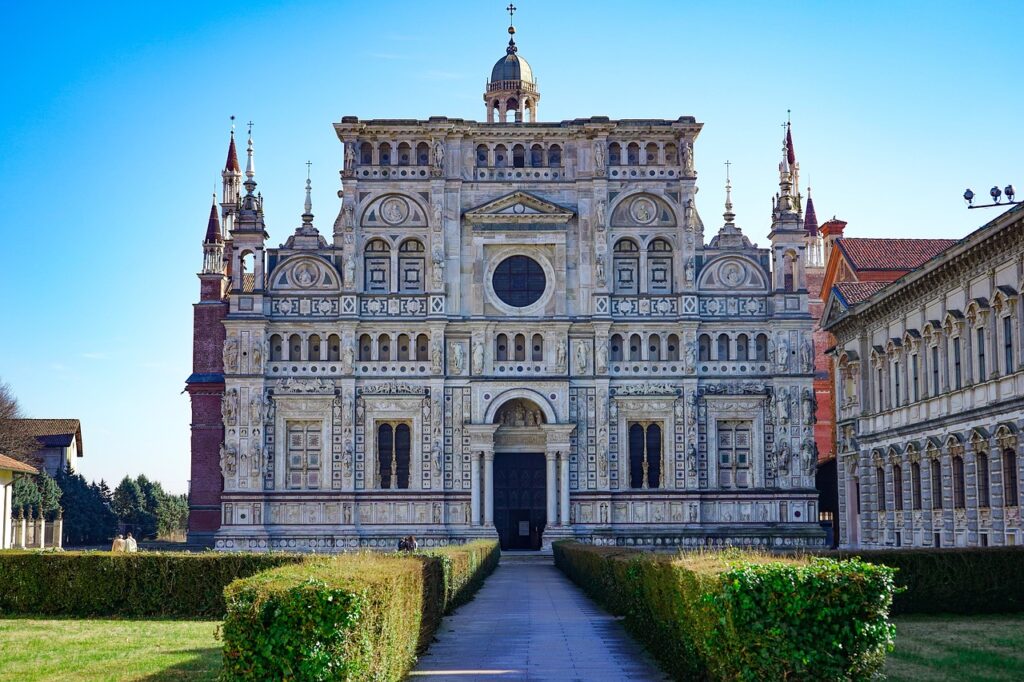Photo: Pixabay
Italy has long been recognized as a global center of art, culture, and design. From the ancient Roman ruins to the Renaissance masterpieces, Italian architecture and design have left an indelible mark on the world. The country’s rich history and diverse regional influences have shaped a unique aesthetic that continues to inspire and captivate to this day.
Italian architecture is a reflection of the country’s storied past, with each era leaving its own distinct imprint. One of the most iconic architectural styles in Italy is Romanesque, which emerged in the Middle Ages. Characterized by its solid, symmetrical structures and rounded arches, Romanesque architecture can be seen in the magnificent cathedrals and castles that dot the Italian landscape.
However, it was during the Renaissance that Italian architecture truly flourished. The period between the 14th and 17th centuries witnessed an unprecedented explosion of creativity, led by brilliant architects such as Filippo Brunelleschi, Leon Battista Alberti, and Andrea Palladio.
The Renaissance brought about a renewed interest in the classical architecture of ancient Greece and Rome, resulting in harmonious proportions, geometric precision, and an emphasis on symmetry. Buildings like the iconic Florence Cathedral, the magnificent St. Peter’s Basilica in Rome, and the elegant Palazzo Ducale in Venice showcase the grandeur and sophistication of Renaissance architecture.

Photo: Pixabay
Italian design, like its architecture, is steeped in history and craftsmanship. Italy has been a pioneer in the fields of furniture, interior design, fashion, and automotive design. Italian furniture designers, such as Gio Ponti and Ettore Sottsass, have created timeless pieces that blend form and function seamlessly. The sleek lines, exquisite materials, and meticulous attention to detail are hallmarks of Italian design.
In the realm of interior design, Italian style is synonymous with elegance and luxury. From the opulent palaces of Venice to the chic apartments of Milan, Italian interiors exude a sense of sophistication and refinement. Richly adorned with frescoes, intricate stucco work, and ornate furnishings, Italian interiors create a sense of grandeur and timeless beauty.
Italian fashion is renowned worldwide for its impeccable craftsmanship and impeccable style. Italian designers, including Giorgio Armani, Valentino Garavani, and Donatella Versace, have made significant contributions to the fashion industry. Italian fashion is known for its attention to detail, luxurious fabrics, and innovative designs. Milan, the fashion capital of Italy, hosts prestigious fashion events like Milan Fashion Week, attracting designers, models, and fashion enthusiasts from around the globe.
When it comes to automotive design, Italy stands at the forefront. Brands like Ferrari, Lamborghini, and Maserati are synonymous with sleek, high-performance vehicles that are both aesthetically pleasing and technically advanced. Italian automotive design embodies the perfect marriage of art and engineering, creating timeless masterpieces on wheels.

Photo: Pixabay
Beyond architecture, furniture, fashion, and automotive design, Italian creativity extends to other realms, including industrial design, graphic design, and product design. Italian designers continuously push boundaries, blending innovation with tradition to create functional and visually stunning products.
The allure of Italian architecture and design lies in its ability to transcend time. Whether it’s the ancient ruins of Rome or the contemporary elegance of a Milanese showroom, Italian design possesses a timeless quality that effortlessly merges the past with the present. It embraces classical principles while embracing innovation, resulting in creations that are both enduring and relevant.
Italian architecture and design have not only influenced the aesthetic sensibilities of people around the world but have also inspired countless designers and architects to create their own unique visions. The legacy of Italian design continues to shape the way we perceive and interact with our built environment.
In conclusion, the timeless beauty of Italian architecture and design is a testament to the ingenuity, creativity, and passion of the Italian people. It is a legacy that has been carefully crafted over centuries, blending tradition with innovation to create works of art that stand the test of time.
The influence of Italian architecture and design can be seen in cities across the globe. From the iconic domes and columns of classical architecture to the sleek lines and minimalist aesthetics of modern design, Italian influence is ubiquitous. Whether it’s the graceful arches of a bridge, the intricate details of a cathedral, or the elegant simplicity of a piece of furniture, the mark of Italian design is unmistakable.
One of the remarkable aspects of Italian architecture and design is its ability to seamlessly integrate with its surroundings. Whether it’s a medieval village perched on a hilltop, a Renaissance palace in the heart of a city, or a modern skyscraper in a bustling metropolis, Italian design has an uncanny ability to harmonize with its environment. It takes inspiration from nature, history, and cultural heritage, creating a sense of place and belonging.
Italian architecture and design also embody a deep appreciation for craftsmanship and quality. Italian artisans have honed their skills over generations, passing down traditional techniques and knowledge. From the master stonemasons who meticulously carve intricate details to the skilled furniture makers who handcraft each piece with care, Italian craftsmanship is synonymous with excellence.
Furthermore, Italian design is not just about aesthetics; it is a way of life. Italians have an innate sense of style and a passion for beauty. It is reflected in their fashion choices, their interior design preferences, and even their daily rituals. From the way they dress to the way they set a table, Italians have an eye for detail and an appreciation for the finer things in life.

Photo: Pixabay
Italian architecture and design also celebrate the concept of “la dolce vita” – the sweet life. It’s about enjoying the pleasures of life, savoring good food, wine, and company. This philosophy is often translated into the design of spaces, where the emphasis is on creating inviting, comfortable environments that encourage relaxation and enjoyment.
The enduring appeal of Italian architecture and design lies in its ability to evoke emotion and create a sense of wonder. Whether it’s the breathtaking beauty of a frescoed ceiling, the intimate charm of a Tuscan villa, or the boldness of a contemporary sculpture, Italian design elicits a visceral response. It invites us to pause, appreciate, and connect with our surroundings on a deeper level.
In a rapidly changing world, where trends come and go, Italian architecture and design remain a constant source of inspiration. It reminds us of the power of timeless aesthetics, thoughtful craftsmanship, and the enduring beauty of the human spirit. It serves as a reminder that great design transcends fleeting fads and leaves a lasting legacy for generations to come.
So, the next time you stroll through the streets of Rome, Florence, or Milan, take a moment to admire the architectural marvels and design wonders that surround you. Allow yourself to be swept away by the timeless beauty and be inspired by the rich heritage that continues to shape the world of art and design. For Italian architecture and design are not just creations of the past, but living, breathing works of art that will continue to captivate and inspire for centuries to come.
Source: NetMuseum.com (link), Brittany.com (link)
















